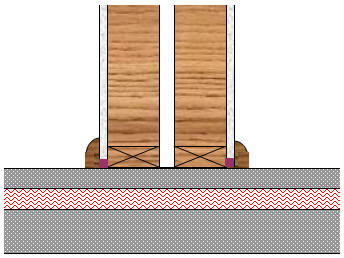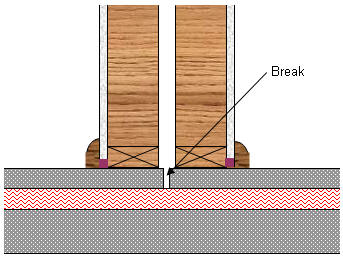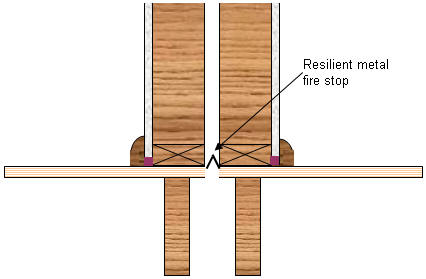Problem: Good wall design but poor noise reduction
Cause: Flanking transmission along the top layer of a concrete floor.
Solutions:
- Avoid installing floor systems that are rigidly connected under a lightweight wall. Flanking sound can travel along the top layer or in the joist to radiate in the room on the other side of the wall. Eliminate by introducing a break in the structure as shown in Figures 14a and 14b.

Figure 14a - Flanking Transmission Along The Top Layer Of Concrete

Figure 14b - Flanking Transmission Along The Top Layer Of Concrete Corrected By The Addition Of A Break
Cause: Flanking transmission along the top layer of a wood floor.
Solutions:
- Do not allow continuous layers of wood to pass under the wall. Make a saw-cut to prevent this happening with double stud systems. Do not use continuous floor joists under a party wall. Use resilient metal fire-stop, not gypsum board, to ensure effective separation as shown in Figure 15.

Figure 15 - Correcting Flanking Transmission Along The Top Layer Of A Wood Floor
- Do not include a continuous subfloor, or one that is effectively continuous because of the gypsum board fire-stopping: it can make an excellent STC 62 party wall behave like an inadequate STC 45 barrier. The subfloor may act as a structural diaphragm, and an engineer will have to assess it before you will be able to reach it and saw it. Adding a true floating floor on each side may be the only way to improve the situation.
Cause: Transmission through the floor into the common cavity underneath.
Solutions:
- Block all openings above and below the party wall.
